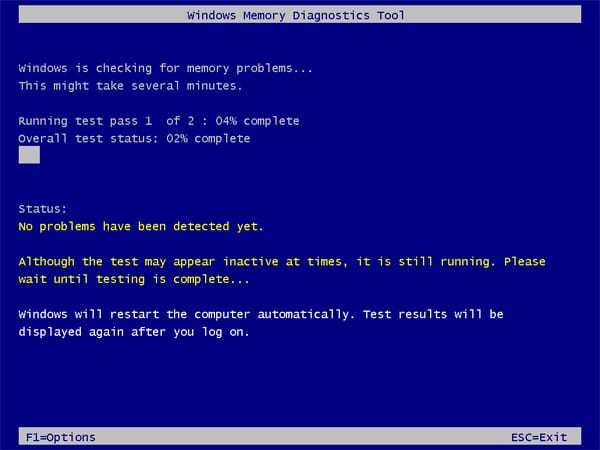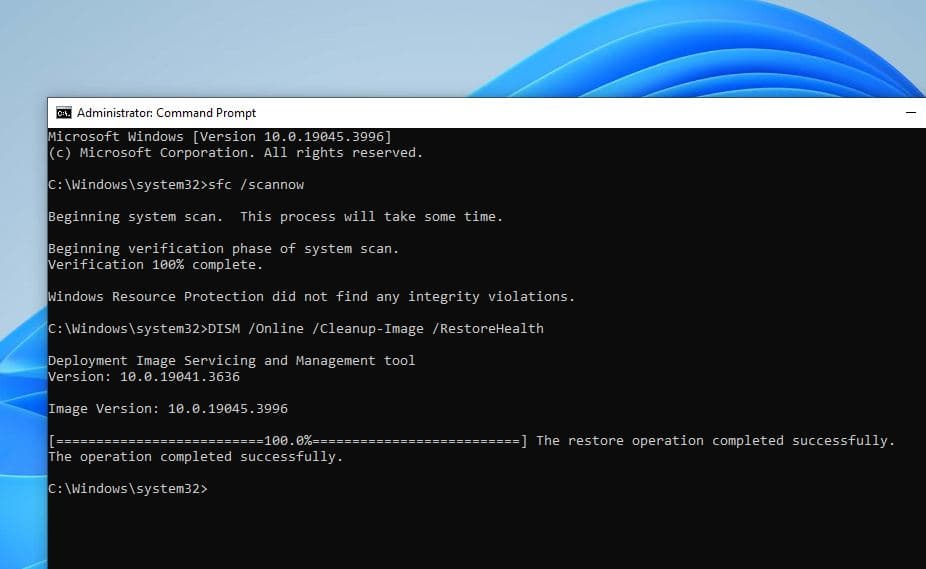Windows Stop Code Memory Management Error usually occurs when the system encounters issues related to memory allocation and management. Memory is an essential component of your computer that stores data and instructions for your programs and processes. When you run multiple applications or perform complex tasks, your system needs to allocate and deallocate memory efficiently and correctly. The memory management process maintains and keeps a record of every memory location, whether allocated or not. However, if something goes wrong on memory allocation, it may result system crash or blue screen memory management error. This article explores the common reason behind this and some possible solutions to fix Windows stop code memory management error.
Memory Management Error in Windows 10
Windows stop code memory management can be caused by various factors, such as faulty hardware, corrupted drivers, malware infection, or incorrect system settings. Depending on the cause, the error can occur randomly or frequently, and it can prevent you from using your computer normally.
- Problem with the memory (RAM) stick or If the RAM is not functioning correctly, it can cause instability in the system and trigger memory management bsod.
- Again Outdated, corrupt, or incompatible device drivers can interfere with proper memory management, leading to Windows memory management blue screen.
- Sometimes Corrupted system files disrupt the normal operation of the memory management system, causing instability in the system.
- Certain applications or software components may not be compatible with the system’s configuration, leading to conflicts that result in memory management errors.
- Overclocking the CPU, GPU, or RAM beyond their recommended limits can put additional strain on the system and lead to memory-related errors.
Disconnect External Devices and reboot PC
Whenever you experience problem with your computer the first thing you need to restart your Windows. Yes, this simple fix can fix all manner of Windows 10 problems including the windows blue screen memory management error. Sometimes, a malfunctioning external device can trigger memory-related issues, so disconnecting them can be a useful troubleshooting step. So, before you try anything else, Disconnect all external devices and restart your computer. This will help if any temporary glitch or driver conflict causes Windows 10 to crash.
- Shut down your computer and disconnect all external devices, including USB drives, printers, and external storage devices.
- Restart your computer and check if the memory management error persists. If the error disappears, reconnect the external devices one by one to identify the culprit.
Disconnecting external devices such as USB drives, printers, or external storage devices can help isolate memory management errors caused by faulty or incompatible peripherals.
Perform startup repair
If Windows fails to boot properly, performing a Startup Repair can help diagnose and fix issues preventing the operating system from loading correctly. Startup Repair scans for and automatically repairs common problems that may be causing memory management errors during startup, such as corrupted system files or misconfigured boot settings.
To perform startup repair, you need to start your computer from the installation media and Access advanced option.
- Insert your Windows installation media (USB drive or DVD) and restart your computer.
- Press any key to boot from the installation media when prompted.
- Select your language, time, currency, and keyboard preferences, and click “Next.”
- Click on “Repair your computer” in the bottom left corner.
- Select “Troubleshoot” > “Advanced options” > “Startup Repair” and follow the on-screen instructions to repair any startup issues.
Boot Into Safe mode
If startup repair fails to fix the problem, Booting into Safe Mode allows Windows to load with only essential drivers and services, which can help identify whether a third-party software or driver is causing the memory management error.
- Again access the Advanced option using installation media, this time select startup settings and click on Restart.
- When the startup settings options, press F4 to enable safe mode F5 enables internet access on safe mode.
If the error does not occur in Safe Mode, it indicates that a recently installed software or driver may be the culprit.
Run Windows Memory Diagnostic Tool
This is the very first thing you should do when you encounter blue screen memory management error on Windows 10. The Windows Memory Diagnostic tool runs a series of tests to check your RAM for any errors and suggest possible fixes. RAM is the physical memory that your system uses to store and access data quickly. If your RAM is faulty or incompatible, it can cause memory-related errors.
- Press Windows + R, type mdsched.exe and click OK.
- This will open the Windows Memory Diagnostic Tool,
You will see two options: Restart now and check for problems or Check for problems the next time I start my computer. Choose the option that suits you best.
Your computer will restart and the tool will scan your memory for errors. If it finds any, it will display them on the screen and suggest possible solutions. It’s essential to let the tool complete its testing process without interruptions to obtain accurate results.
You can check the Memory diagnostic results from here. If there is, then you’ll have to either replace the RAM yourself or send back your computer if it’s under warranty.
In addition, you can use MemTest86 to perform an in-depth memory test
Adjust Your Virtual Memory Settings
Virtual memory is a feature that allows your system to use part of your hard disk as an extension of your RAM. This can improve your system performance and prevent memory-related errors. However, if your virtual memory settings are not optimal, they can also cause problems.
- Press Windows + Pause/Break to open the System window.
- Click on Advanced System Settings on the left pane.
- Click on the Advanced tab and then click on Settings under Performance.
- Click on the Advanced tab again and then click on Change under Virtual memory.
- Uncheck the box that says Automatically manage paging file size for all drives.
- Select your system drive (usually C:) and click on Custom Size.
Enter a value that is 1.5 times your total RAM in both the Initial size and Maximum size boxes. For example, if you have 8 GB of RAM, enter 12288 MB in both boxes.
- Click on Set and then click on OK, Restart your computer and check if the error is resolved.
Update Corrupted Device Driver
Another common cause of Windows stop code memory management error is outdated or incompatible drivers. Drivers are software components that allow your hardware devices to communicate with your operating system. If they are not updated or compatible, they can cause conflicts and errors. So to fix the error you need to update the essential driver to the most recent correct version.
While Device Manager is a convenient built-in tool for updating drivers, you can also consider using third-party driver update software for a more comprehensive scan and update process.
- Right-click on the Start button and select “Device Manager” from the menu.
- In Device Manager, expand the categories for the hardware components you want to update, such as “Display adapters” for graphics card drivers.
- Right-click on the device you want to update and select “Update driver.”
- Choose either “Search automatically for updated driver software” to let Windows search for the latest drivers online, or “Browse my computer for driver software” if you have downloaded the driver files manually.
- Follow the on-screen instructions to complete the driver update process, reboot your computer to apply changes.
Also, you can Visit the Device manufacturer’s Website to download and install the latest available driver for your system. (Especially Display Driver, Network Adapter, and Audio Driver)
Run SFC and DISM command
Still, Memory management error occurring? It may be because important system files are damaged or corrupted due to power interruption, disk error or malware infection. Run System File Checker (SFC) and Deployment Image Servicing and Management (DISM) tools to scan and repair corrupted system files.
First Open the Command Prompt with administrative privileges. Press the Windows key type cmd, right-click on the command prompt select run as administrator.
- Run the command “sfc /scannow” to scan and repair corrupted system files.
- After the SFC scan is complete, run the command “DISM /Online /Cleanup-Image /RestoreHealth” to repair any component store corruption.
- Wait for the scanning to complete, it may take up to 20 minutes, depending on your system’s health.
- When the process completes, exit the command prompt and reboot your PC.
Install the latest Windows updates
Outdated versions of Windows 10 or system files can cause unexpected errors. Checking for and installing pending updates is another quick and easy way to figure out if that is causing blue screen error.
- Press Windows + I to open the settings app,
- Click Update & security then Windows Update,
- Hit the check for updates button, This will download and install if the latest updates are available,
- Restart Windows to apply the changes, and check if no more BSOD error occurs.
Scan Your System for Malware
In addition, perform a full system scan with Windows security or third-party antivirus to remove any malware infection that might trigger this error. Boot-time scans run before Windows fully loads, making it easier to detect and remove malware that may be actively interfering with memory management processes.
Also read:
- Solved: Windows 10 Won’t Shut Down (stuck) after update
- How to fix External Hard Drive not showing up on Windows 10
- No Audio Output Device Is Installed Windows 10 (5 ways to fix)
- Solved: uTorrent not responding or opening on Windows 10
- Solved: Unidentified network no internet access on Windows 10 !!!








